Abstract
Studies were conducted with 9 to 12 day-old soybean (Glycine max [L.] Merr. cv. Williams) seedlings to determine the contribution of roots to whole plant NO3− reduction. Using an in vivo -NO3− nitrate reductase (NR) assay (no exogenous NO3− added to incubation medium) developed for roots, the roots accounted for approximately 30% of whole plant nitrate reductase activity (NRA) of plants grown on 15 mm NO3−.
Nitrogen analyses of xylem exudate showed that 53 to 66% of the total-N was as reduced-N, depending on the time of day of exudate collection. These observations supported enzyme data that suggested roots were contributing significantly to whole plant NO3− reduction. In short-term feeding studies using 15N-NO3− significant and increasing atom percent 15N excess was found in the reduced-N fraction of xylem exudate at 1.5 and 3 hours after feeding, respectively, which verified that roots were capable of reducing NO3−.
Estimated reduced-N accumulation by plants based on in vivo -NO3− NR assays of all plant parts substantially over-estimated actual reduced-N accumulation by the plants. Thus, the in vivo NR assay cannot be used to accurately estimate reduced-N accumulation but still serves as a useful assay for relative differences in treatment conditions.
Full text
PDF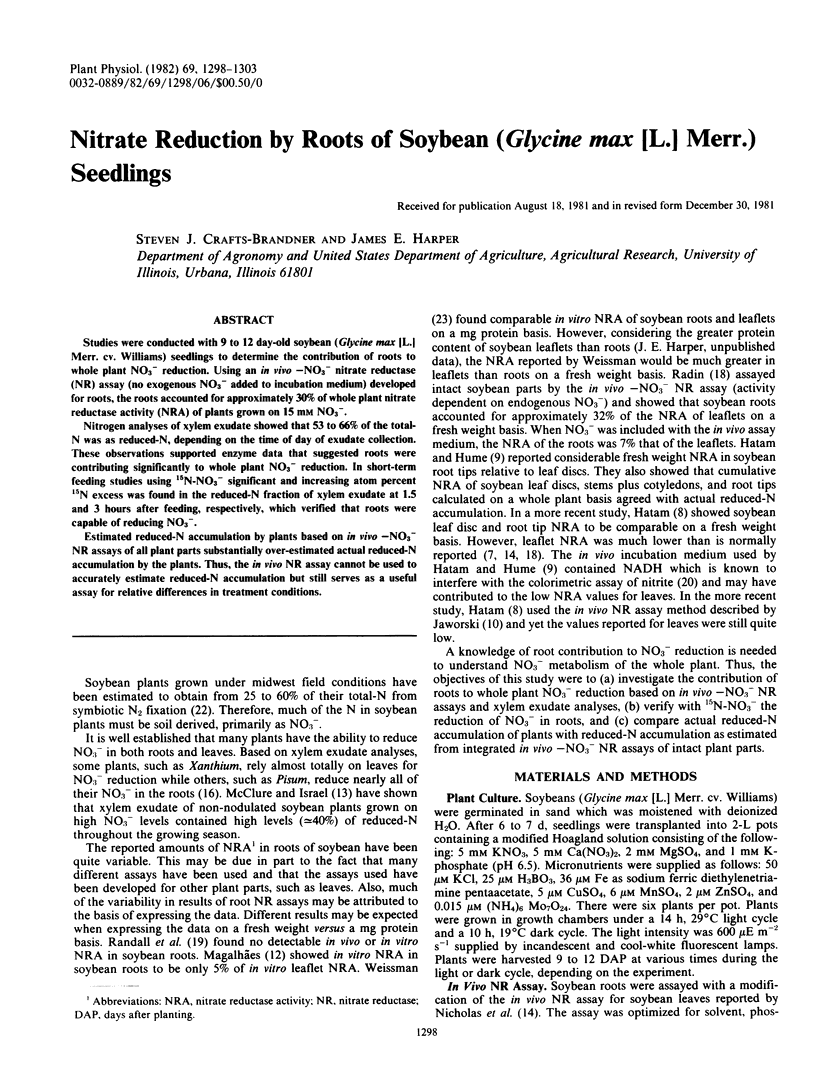
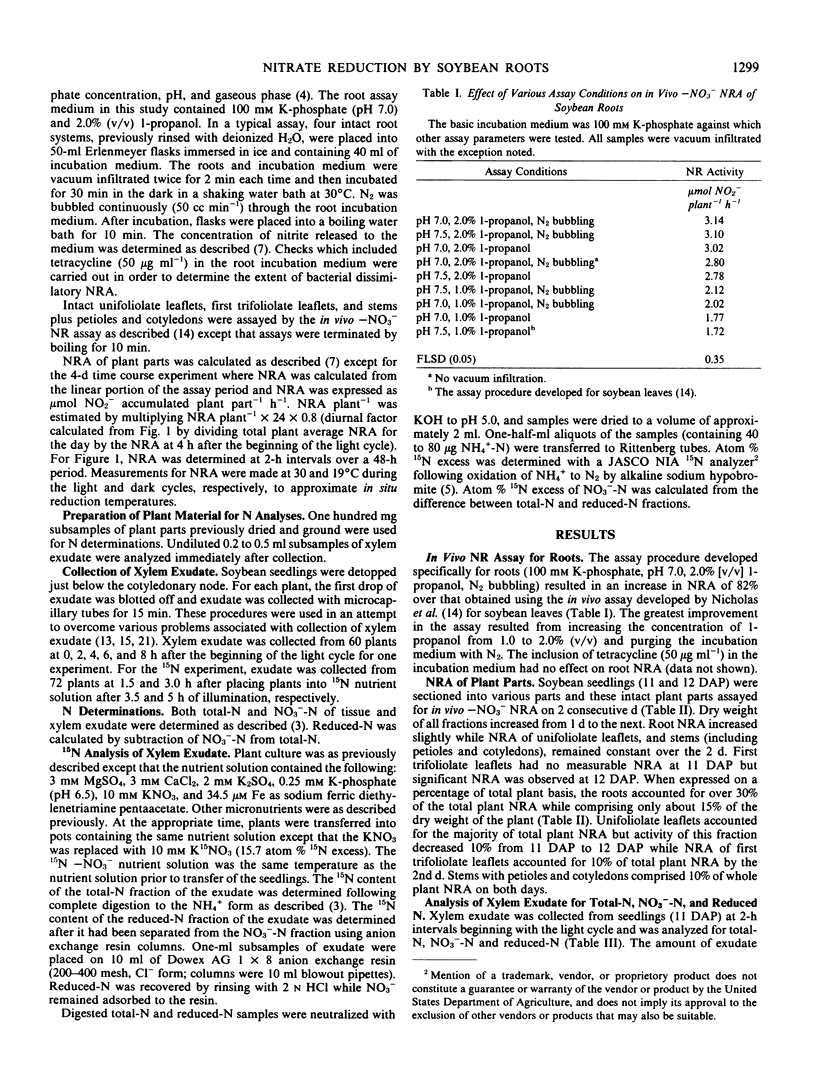
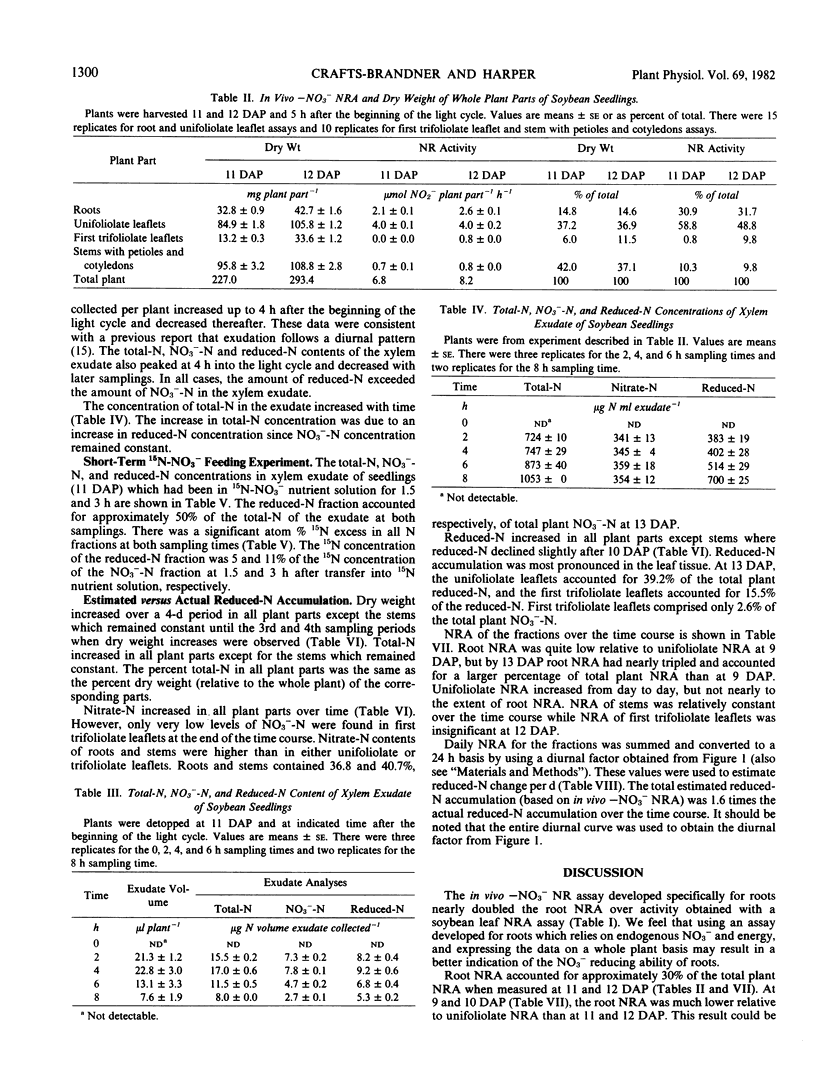
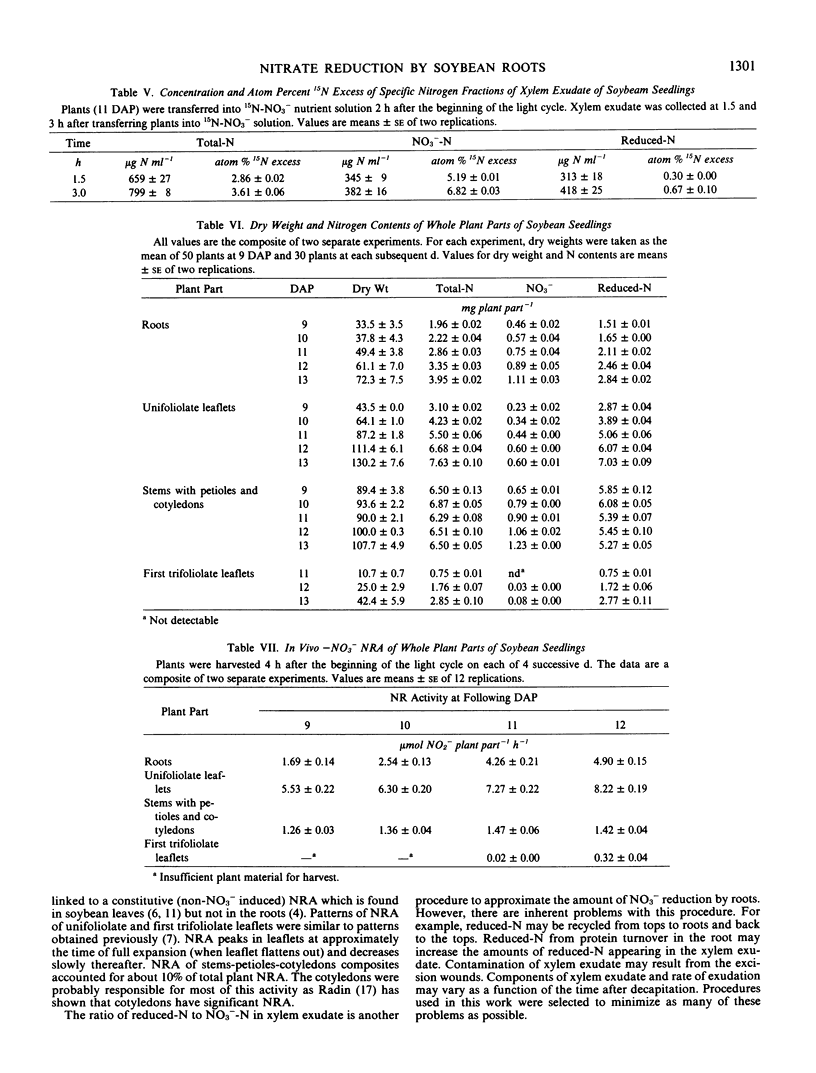
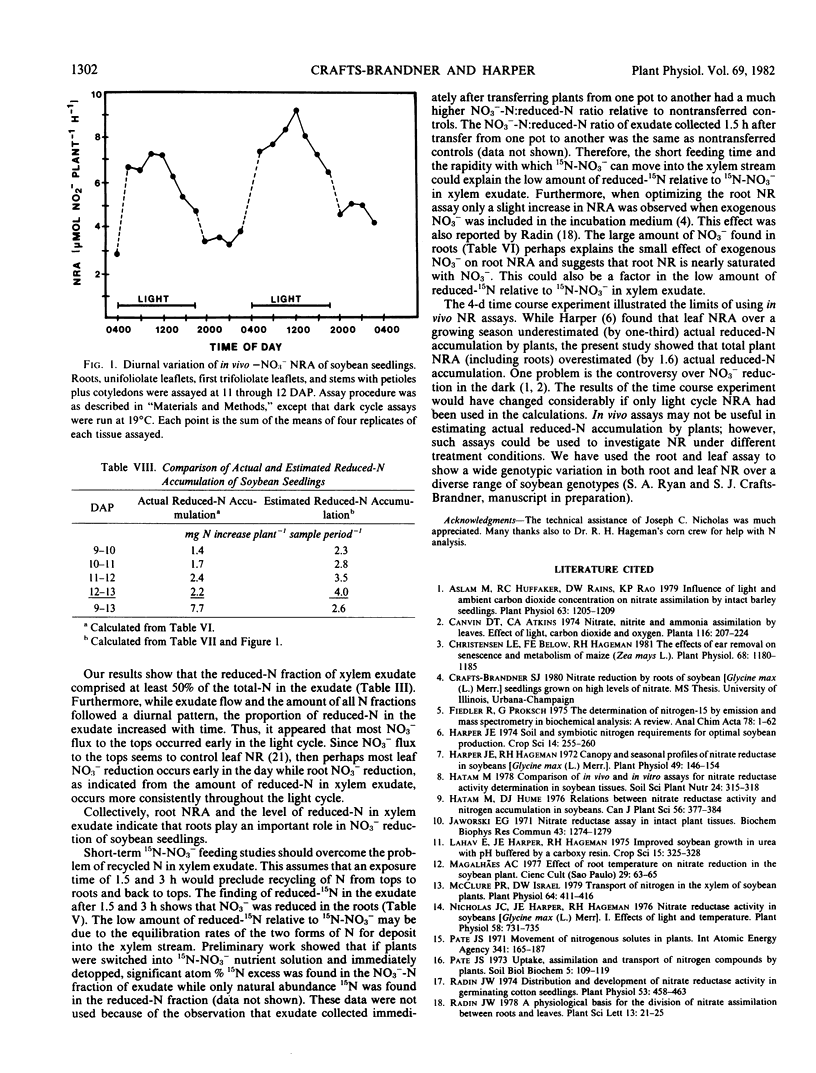

Selected References
These references are in PubMed. This may not be the complete list of references from this article.
- Aslam M., Huffaker R. C., Rains D. W., Rao K. P. Influence of light and ambient carbon dioxide concentration on nitrate assimilation by intact barley seedlings. Plant Physiol. 1979 Jun;63(6):1205–1209. doi: 10.1104/pp.63.6.1205. [DOI] [PMC free article] [PubMed] [Google Scholar]
- Christensen L. E., Below F. E., Hageman R. H. The effects of ear removal on senescence and metabolism of maize. Plant Physiol. 1981 Nov;68(5):1180–1185. doi: 10.1104/pp.68.5.1180. [DOI] [PMC free article] [PubMed] [Google Scholar]
- Harper J. E. Canopy and Seasonal Profiles of Nitrate Reductase in Soybeans (Glycine max L. Merr.). Plant Physiol. 1972 Feb;49(2):146–154. doi: 10.1104/pp.49.2.146. [DOI] [PMC free article] [PubMed] [Google Scholar]
- Jaworski E. G. Nitrate reductase assay in intact plant tissues. Biochem Biophys Res Commun. 1971 Jun 18;43(6):1274–1279. doi: 10.1016/s0006-291x(71)80010-4. [DOI] [PubMed] [Google Scholar]
- McClure P. R., Israel D. W. Transport of nitrogen in the xylem of soybean plants. Plant Physiol. 1979 Sep;64(3):411–416. doi: 10.1104/pp.64.3.411. [DOI] [PMC free article] [PubMed] [Google Scholar]
- Nicholas J. C., Harper J. E., Hageman R. H. Nitrate Reductase Activity in Soybeans (Glycine max [L.] Merr.): I. Effects of Light and Temperature. Plant Physiol. 1976 Dec;58(6):731–735. doi: 10.1104/pp.58.6.731. [DOI] [PMC free article] [PubMed] [Google Scholar]
- Radin J. W. Distribution and development of nitrate reductase activity in germinating cotton seedlings. Plant Physiol. 1974 Mar;53(3):458–463. doi: 10.1104/pp.53.3.458. [DOI] [PMC free article] [PubMed] [Google Scholar]
- Scholl R. L., Harper J. E., Hageman R. H. Improvements of the nitrite color development in assays of nitrate reductase by phenazine methosulfate and zinc acetate. Plant Physiol. 1974 Jun;53(6):825–828. doi: 10.1104/pp.53.6.825. [DOI] [PMC free article] [PubMed] [Google Scholar]
- Shaner D. L., Boyer J. S. Nitrate Reductase Activity in Maize (Zea mays L.) Leaves: I. Regulation by Nitrate Flux. Plant Physiol. 1976 Oct;58(4):499–504. doi: 10.1104/pp.58.4.499. [DOI] [PMC free article] [PubMed] [Google Scholar]
- Weissman G. S. Influence of ammonium and nitrate nutrition on enzymatic activity in soybean and sunflower. Plant Physiol. 1972 Feb;49(2):138–141. doi: 10.1104/pp.49.2.138. [DOI] [PMC free article] [PubMed] [Google Scholar]


